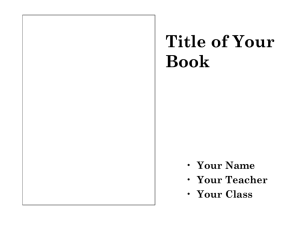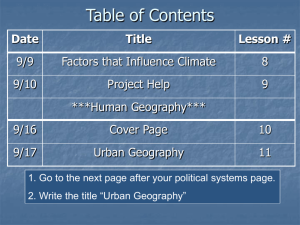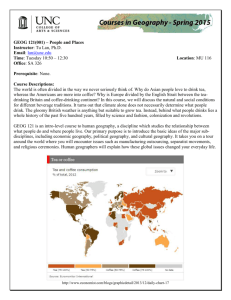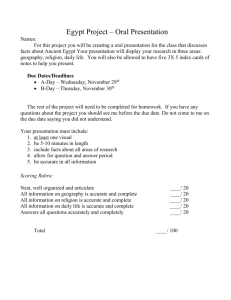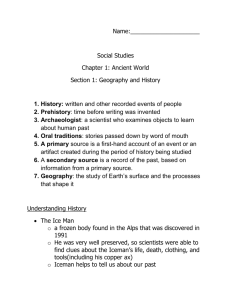AP Human Geography: Cities & Urban Land Use Unit
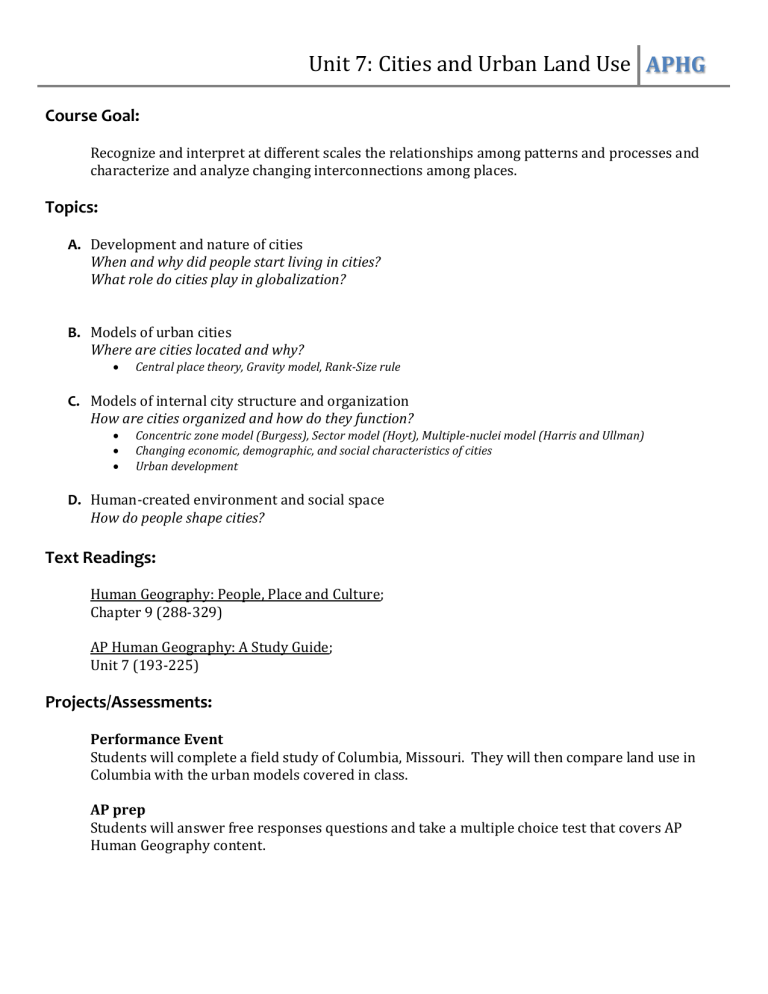
Unit 7: Cities and Urban Land Use
APHG
Course Goal:
Recognize and interpret at different scales the relationships among patterns and processes and characterize and analyze changing interconnections among places.
Topics:
A.
Development and nature of cities
When and why did people start living in cities?
What role do cities play in globalization?
B.
Models of urban cities
Where are cities located and why?
Central place theory, Gravity model, Rank-Size rule
C.
Models of internal city structure and organization
How are cities organized and how do they function?
Concentric zone model (Burgess), Sector model (Hoyt), Multiple-nuclei model (Harris and Ullman)
Changing economic, demographic, and social characteristics of cities
Urban development
D.
Human-created environment and social space
How do people shape cities?
Text Readings:
Human Geography: People, Place and Culture;
Chapter 9 (288-329)
AP Human Geography: A Study Guide;
Unit 7 (193-225)
Projects/Assessments:
Performance Event
Students will complete a field study of Columbia, Missouri. They will then compare land use in
Columbia with the urban models covered in class.
AP prep
Students will answer free responses questions and take a multiple choice test that covers AP
Human Geography content.




